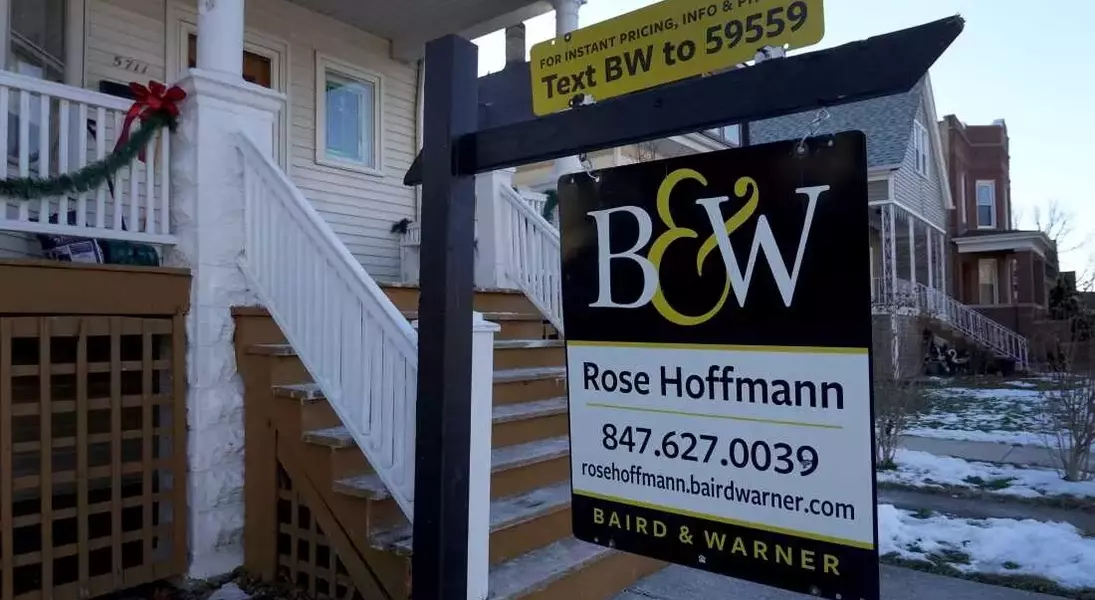




Unlock Your Dream Home: Navigating Today's Challenging Housing Market!
The Shifting Demographics of Initial Property Acquisitions
First-time property acquirers are notably maturing. This demographic evolution is so pronounced that the National Association of Realtors found it necessary to alter the imagery for the cover of their latest publication. Initially, a depiction of a youthful, expectant couple was chosen, but this was deemed unrepresentative of the present reality. As articulated by Jessica Lautz, the deputy chief economist for the Realtors' association, the prevalence of young couples in the home-buying market has significantly diminished. Consequently, the organization opted for a photograph featuring an older couple, more accurately reflecting the typical age of contemporary home purchasers, which now stands at 59 years. For those embarking on their first home purchase, the average age has climbed to a record 40 years.
Diminished Opportunities for New Entrants in Real Estate
During the twelve-month period concluding in June, individuals buying a home for the first time constituted merely a fifth of all residential transactions. This figure marks an unprecedented low, representing half the proportion observed a generation prior. Lautz emphasizes that this trend signals profound structural issues within the property sector that demand immediate attention. She highlights the critical lack of available properties for younger adults, impeding their ability to secure what often represents their most significant financial asset and preventing their entry into the property ownership trajectory. Addressing this scarcity is imperative.
Financial Constraints and Homeownership Aspirations
Eve Burdick, alongside her spouse Cael, recently commemorated their inaugural wedding anniversary. Both individuals are thirty years of age and, at this juncture in their lives, aspire to acquire their first residence. However, despite the fact that housing valuations in Minneapolis, their city of residence, are below the national median, every property they evaluate proves to be either beyond their financial reach or necessitates more substantial renovations than they can economically undertake. Burdick articulates the impracticality of purchasing a property valued at $350,000 and subsequently securing a home-equity loan to finance extensive renovations, such as drywalling a basement.
Lingering Debt and Delayed Property Purchases
Burdick observes that her parents, at a comparable age, had already established themselves as homeowners for several years. Such an achievement, however, is increasingly uncommon in the contemporary housing landscape. A contributing factor is the extended tenure of current homeowners, who, often benefiting from advantageous mortgage rates, are opting to remain in their residences for longer durations—an average of 11 years, according to the latest Realtors' report. This trend consequently reduces the availability of properties for prospective new buyers, leading to a state of 'gridlock' in the market, as described by Lautz. The overarching scarcity of housing inventory is further exacerbated by the escalating costs of essential goods and services, which significantly hinder first-time buyers' capacity to accumulate a sufficient down payment. Additionally, many are burdened with pre-existing financial obligations. Eve Burdick and her husband are actively managing both student loan and medical debts. A period of unemployment for Burdick also substantially depleted their savings. This confluence of factors leaves them feeling considerably behind their projected timeline for homeownership, with their initial expectation of purchasing a home within a year now postponed to an estimated three or four years, by which time they anticipate being in their mid-thirties.
Market Uncertainty and the Quest for Stability
Sasha Skelton, currently in her mid-thirties, and her partner both hold full-time positions; she is employed in human resources for a financial institution, and he in property management. Skelton expresses regret that they did not acquire a home several years prior when interest rates were more favorable, yet they frequently encountered being outbid during their search. Presently, she finds all properties within their Richmond, Virginia suburban area to be exceedingly costly. Furthermore, she harbors concerns regarding the employment sector and the broader economic climate. This apprehension makes her wary of committing to a significant investment, fearing that potential job loss could jeopardize their homeownership. The cumulative effect of increased grocery expenses, among other rising costs, contributes to a sense of overwhelming financial pressure. Consequently, Skelton and her partner have temporarily suspended their home search, though they have not abandoned the aspiration entirely. Having experienced a transient upbringing as an 'Army brat,' Skelton yearns for the stability of a permanent residence where they can establish roots. However, she concludes that the prevailing market conditions are currently unconducive to fulfilling this desire.
